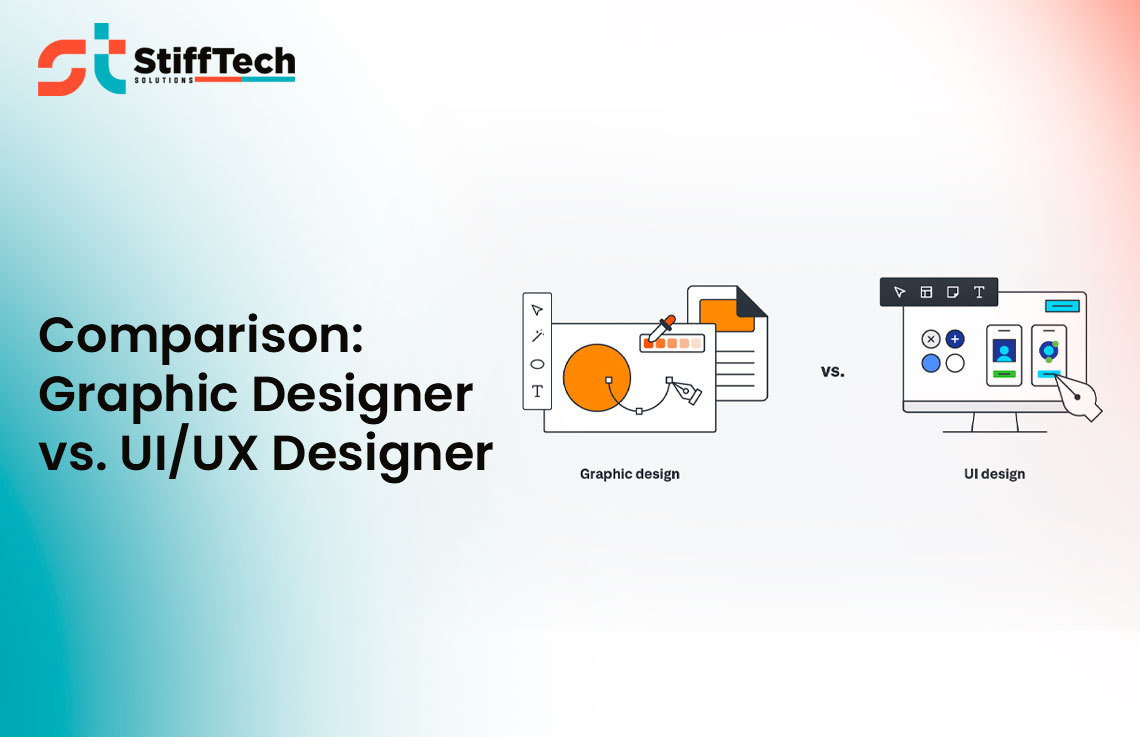
How to Use DeepSeek for Digital Marketing
The rise of AI has transformed the way businesses approach digital marketing. Tools like DeepSeek make it easier to analyze

Do you ever wonder what the difference is between a graphic designer and a UI/UX designer? Despite the fact that both of them are the magicians of creativity, they both have different problems to solve. Their work, which is based on visually appealing ways and user experience design, plays a really important role in the way the world is experienced by us.
Are you interested in the tools they use and the skills they own? All right, let’s uncover the interesting distinctions between the two successful designers!
A graphic designer is a creative professional who makes visual content to transmit the messages effectively. They are able to work with all kinds of media, from print material, digital banners, logos, and brand identities, if needed be. They ensure the event is focused on the aesthetic perspective, where each design should retain the brand visual elements.
When it comes to the UI/UX designers, the key area of expertise lies in creating visitor-friendly digital experiences. UI designers are responsible for the visual and interactive components of the interface, whereas, UX designers are all about the user journey and make sure it’s easy and enjoyable to use. All in all, the major aspiration is to develop digital goods that not only look good and work well but are also easy to use.
There are the main differences between the graphic design and UI design that can be summarized in the following way:
The graphic artists utilize the right tools that allow them to develop static as well as visually compelling content.
Create stunning and visually beautiful, often static, results with these tools, which are specifically designed to enhance creativity.
Designers can benefit from tools that make it possible for them to convert their communication into virtual, and attractive digital designs.
The software tools from the developer known as Adobe such as Photoshop and Illustrator are extremely common in all the areas mentioned above. They provide a basis for note-taking, modeling, and visual development.
The touch interface designers need to use programs such as Figma and Sketch that focus on collaboration and prototyping for the devices to receive real-time feedback and several iterative steps.
UX designers use tools like Azure and usability testing platforms to refine designs based on user behavior and feedback, ensuring the final product meets user expectations.
While it’s possible to combine roles, specializing in one area often leads to better results. Each role requires specific skills and expertise.
Transitioning may take a few months to a year, depending on prior experience and the effort invested in learning new skills.
Graphic designers often face tight deadlines and creative blocks. UI designers must balance aesthetics with functionality, while UX designers deal with extensive testing and user feedback.

The rise of AI has transformed the way businesses approach digital marketing. Tools like DeepSeek make it easier to analyze

You’re about to create a content marketing strategy. It’s 2025, and you need a solid plan to drive leads. The

You’re about to launch a marketing campaign. To ensure it’s effective, you’ll want to run an A/B test. You’ll need